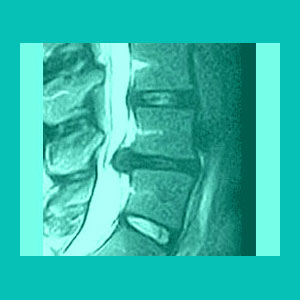
Ligamentum flavum hypertrophy is also commonly known as ligamentum flavum thickening. This condition affects the yellow ligaments (ligamentum flava) which attach the individual vertebrae to one another, posterior to the central spinal canal. This diagnosis is a common finding on herniated disc MRI results and is often a puzzle for patients who do not understand the terms on the report. The condition is actually very simple once it is explained, and luckily is rarely the exclusive source of symptoms. However, ligament inflammation can be causative or contributory to pain or neurological dysfunction in particular circumstances.
This patient guide examines the role played by ligamentous inflammation in the posterior spinal canal and its relationship to intervertebral herniation.
What is Ligamentum Flavum Hypertrophy?
Hypertrophy of the yellow ligament is a normal process which affects most people to some extent, and some people to a large extent, just like the other typical spinal aging processes, such as degenerative disc disease and osteoarthritis.
Hypertrophy describes a swelling beyond normal size and possible breakdown of elasticity in the ligament itself at one or more spinal levels. This yellow ligament attaches to the inside of the vertebrae, rearward of the central spinal canal. When it becomes inflamed or lax, it can cause or contribute to central spinal stenosis on the posterior side of the vertebral canal.
Ligamentum Flavum Pain Problems
Partial spinal stenosis is rarely anything of consequence and is actually a completely normal part of aging for the cervical and lumbar spinal regions. However, when conditions are perfectly met, ligamentum flavum thickening can create symptomatic and possibly extreme stenosis symptoms in some patients. Typically this occurs under any of the following scenarios:
Patient demonstrates a large central or paramedial herniated disc which is creating a stenosis condition on the frontal and side areas of the central canal. The ligamentum thickening basically seals off the canal, often compressing the actual spinal cord or cauda equina.
Patient has drastic osteoarthritic change which has closed off much of the anterior central canal and is finished off by the ligamentum hypertrophy.
Patient has a congenitally narrowed central canal and moderate to advanced spinal degeneration in addition to ligament hypertrophy.
Patient has some other reason for central canal stenosis, such as a significant abnormal spinal curvature or spondylolisthesis condition.
Ligamentum Flavum Hypertrophy Discussion
I have seen a few cases in which the ligamentum flavum has become so inflamed or lax that it has actually captured and compressed a nerve root. This is extremely rare, but is possible and is often not correctly diagnosed until an operation is performed. The vast majority of MRI findings stating ligamentum flava thickening are nonissues, as most doctors will tell.
Ligament inflammation can be simply yet another demonized structural issue which is basically normal in the spines of adults and mistakenly blamed for enacting back or neck pain.
Know the facts about the condition before seeking any drastic treatment option to minimize your chances of falling victim to failed spinal surgery syndrome, since invasive procedures are the usual therapy protocol.
Herniated Disc > Herniated Disc Diagnosis > Ligamentum Flavum Hypertrophy




